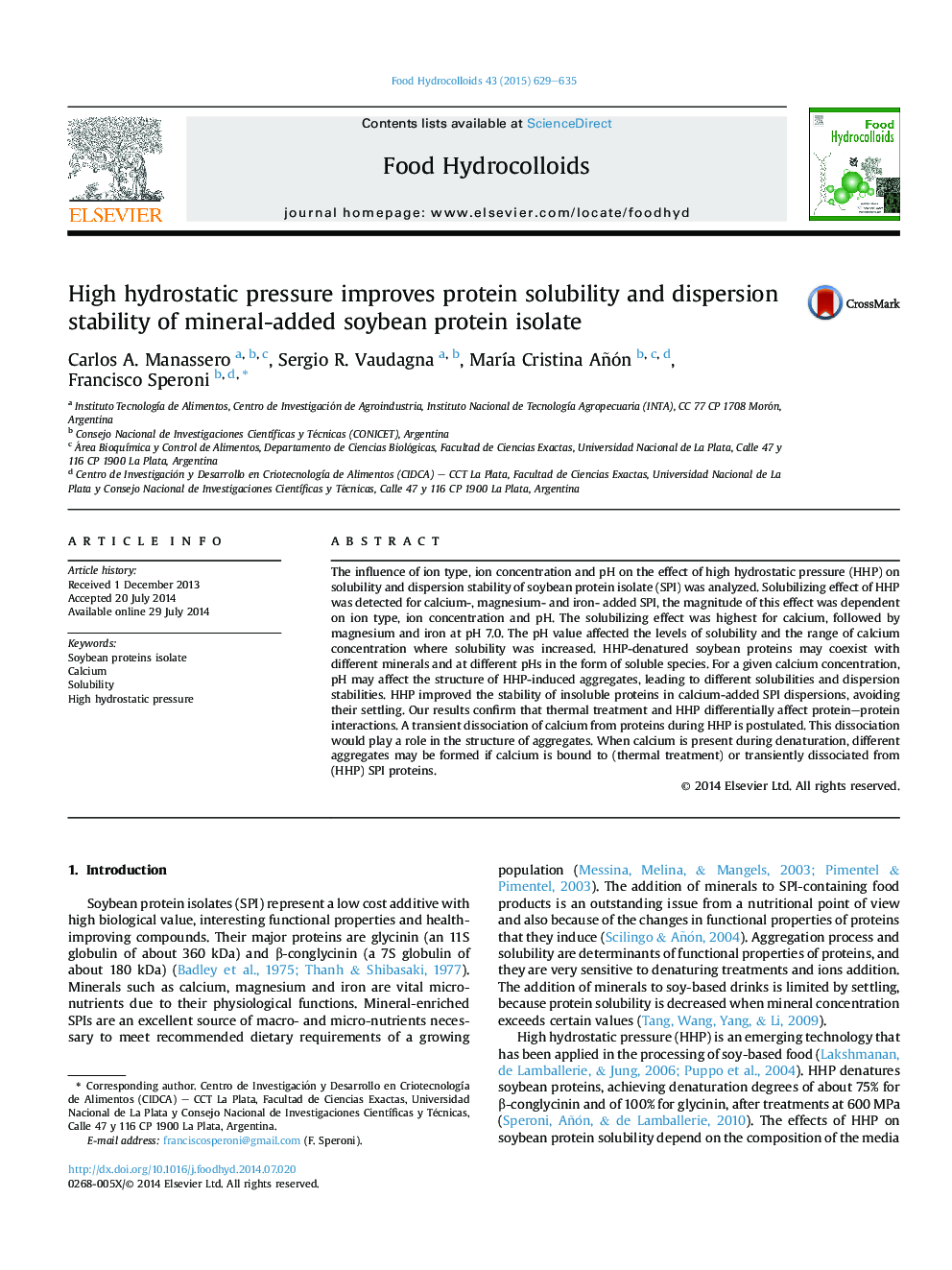| Article ID | Journal | Published Year | Pages | File Type |
|---|---|---|---|---|
| 604692 | Food Hydrocolloids | 2015 | 7 Pages |
•High hydrostatic pressure (HHP) improved solubility of mineral-added soybean protein.•The higher the pH, the higher the HHP-induced increase of solubility.•Transient dissociation of calcium from proteins during HHP treatment was proposed.•The insoluble proteins were kinetically stabilized by HHP treatment.
The influence of ion type, ion concentration and pH on the effect of high hydrostatic pressure (HHP) on solubility and dispersion stability of soybean protein isolate (SPI) was analyzed. Solubilizing effect of HHP was detected for calcium-, magnesium- and iron- added SPI, the magnitude of this effect was dependent on ion type, ion concentration and pH. The solubilizing effect was highest for calcium, followed by magnesium and iron at pH 7.0. The pH value affected the levels of solubility and the range of calcium concentration where solubility was increased. HHP-denatured soybean proteins may coexist with different minerals and at different pHs in the form of soluble species. For a given calcium concentration, pH may affect the structure of HHP-induced aggregates, leading to different solubilities and dispersion stabilities. HHP improved the stability of insoluble proteins in calcium-added SPI dispersions, avoiding their settling. Our results confirm that thermal treatment and HHP differentially affect protein–protein interactions. A transient dissociation of calcium from proteins during HHP is postulated. This dissociation would play a role in the structure of aggregates. When calcium is present during denaturation, different aggregates may be formed if calcium is bound to (thermal treatment) or transiently dissociated from (HHP) SPI proteins.
Graphical abstractFigure optionsDownload full-size imageDownload as PowerPoint slide
